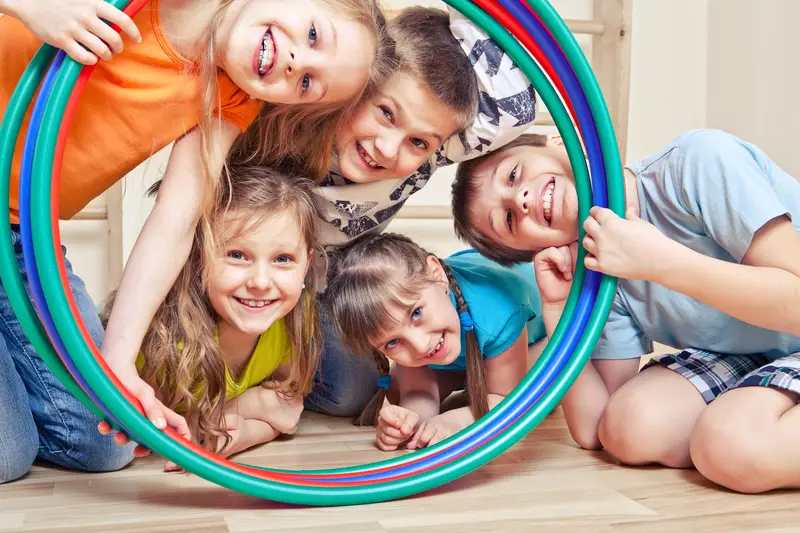Acupressure for children is not only a great method for treating minor ailments at home but also a fantastic way to start teaching children about natural healing and the powers of their own immune system. It’s also possible to teach children to perform acupressure on themselves, relieve minor ailments and pains, and encourage the body to heal itself with pharmaceutical intervention.
Acupressure, like other kinds of integrative medicine, focuses on a holistic approach, treating the child rather than merely the illness. As a result, acupressure for children works just as well on healthy children as it does on those suffering from pain or illness.
Is Acupuncture Safe For Children?
It’s understandable that many parents are nervous about having a stranger, even a qualified practitioner, practice acupuncture on their children. Even if the parents have undergone acupuncture treatments themselves and know the needling process to be painless, it’s difficult to watch it being done to your own child. In addition, many children have an instinctive fear of needles, which makes it difficult for them to relax and submit to an acupuncture session.
Those practitioners with experience working with children stress the importance of creating a friendly environment before beginning any acupuncture treatment. Toys, puppets, and books can be used to help children relax and reduce their anxiety. For some children, gaining some exposure to acupressure before experimenting with acupuncture makes the idea less alien and frightening. For younger children, especially those under six years old, smaller needles are used, and treatment times are reduced. Non-invasive methods, including laser or electrical stimulation, can also be used.
Knowing the facts about acupuncture for kids can make parents less resistant to trying the treatment. Acupuncture treatment is well-established as an effective treatment for pediatric pain, infant colic, and headaches and has also been shown to be very safe for children. A systematic review of 22 randomized controlled clinical trials found that the most frequent adverse reactions to acupuncture in children were sedation and needle pain. The most commonly reported negative side effect was puncture redness around the insertion point. Among 1865 total treatments given to children, the researchers discovered only one serious adverse event.
Can Acupressure Be Done On Kids?
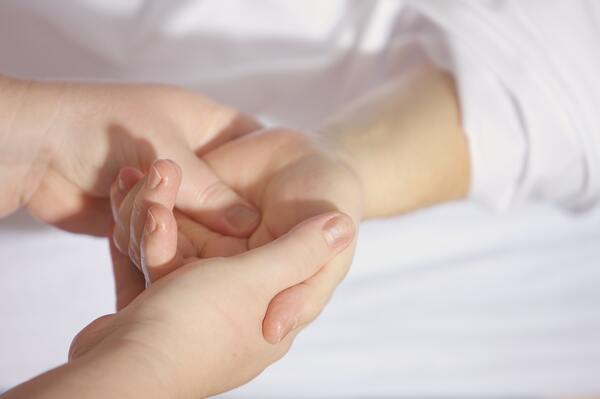
Unlike acupuncture, which should only be practiced by a qualified professional, acupressure is a safe way of treating basic ailments at home. Acupressure can help to ease pain and calm your child, improve immune function, and send them off to sleep. You can practice acupressure while bathing, nursing, or putting your infant to sleep.
Young infants, in particular, may respond better to acupressure as they have higher energy levels and lower levels of toxins than most adults. In fact, children respond so well to acupressure that, when done correctly, it can be just as effective as more invasive treatments, such as acupuncture. It’s very important, however, that you learn to use the right techniques and identify the correct acupressure points for kids in order to achieve a positive therapeutic effect.
When performing acupressure for children, you’ll want to be more gentle than you normally would with adults. If your child is mature enough to follow instructions, ask them to breathe deeply for five to ten breaths as you massage the acupressure point. For infants, you can simply gently press the point for ten to thirty seconds. Massage the acupressure points in a circular motion. You can repeat a few times a day, but don’t spend more than thirty seconds on any one acupressure point. Best of all, teach your children how to practice acupressure on themselves.
What Are The Best Acupressure Points For Children?
Acupoint: GV-20 (Other Names: The Governing Vessel-20/Bai Hui/Hundred Convergence)
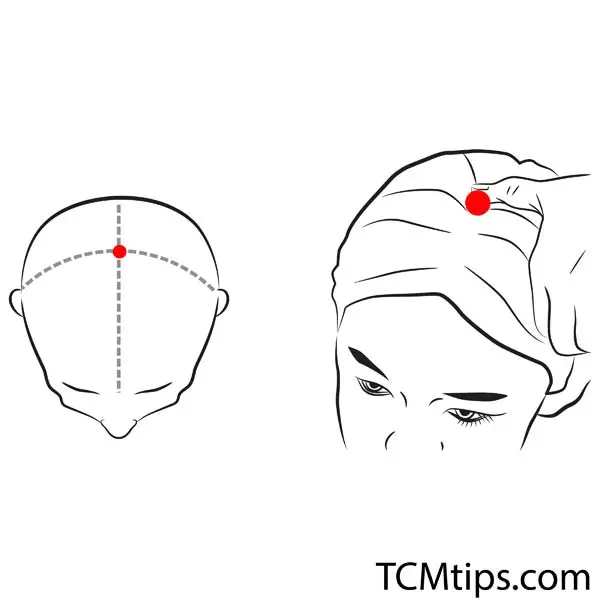
GV-20 is a useful acupoint for treating anxiety, nausea, headaches, and dizziness, as well as being one of the best acupressure points to make a child sleep.
In Traditional Chinese Medicine (TCM), GV-20 is an essential acupressure point because it is located at the top of the head, where the meridians of the bladder and gall bladder, the liver channels, and the triple energizer come together. This is why it is known as the Bai Hui (“Hundred Convergence”) in Chinese.
Stimulating the Bai Hui can treat energy imbalances and motor control issues and has an instant calming effect. Acupressure massage at the Bai Hui point expels heat from the yang channels and improves concentration and focus, making it an important point for parents who want to use acupressure for a hyperactive child.
GV-20 is an easy acupoint to find as it is located in the center of the top of the head. Follow an imaginary line up from each of your child’s ears to the top of the head. Ask your child to breathe slowly and deeply as you massage this point with a gentle, circular motion.
Acupoint: ST-25 (Other Names: Stomach-25/Tian Shu/Celestial Pivot)
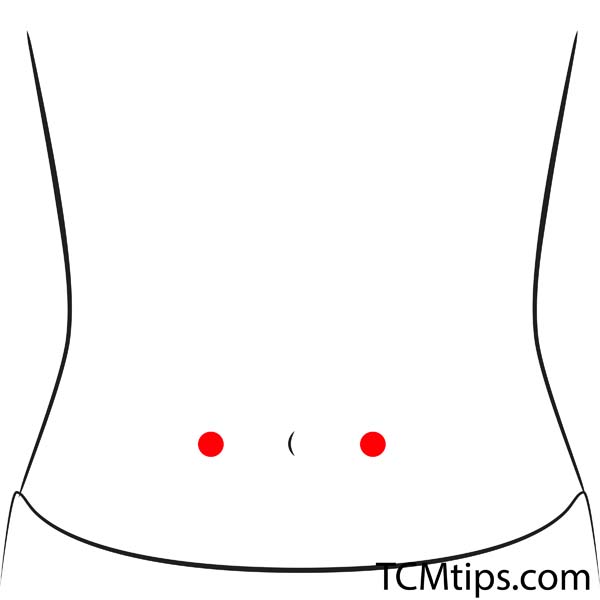
Another wonderful acupressure point for kids is ST-25, known as the Tian Shu. Activating the Tian Shu has a curative effect on digestive issues and abdominal pain, making it an excellent point to use in acupressure for stomach pain in children.
In TCM, ST-25 is regarded as a regulator of the spleen, intestines, and stomach. Stimulation here can dispel dampness and heat in the stomach and help to relieve your child’s constipation and gastric pain. Clinical trials have shown electroacupuncture at ST-25 to have a significant analgesic effect.
To find ST-25, measure three finger widths out from the belly button. You should feel a slight stiffness in this position. Apply light pressure on your child’s stomach with your thumbs or index fingers, or teach your child to massage this point by themselves.
Acupoint: LU-5 (Other Names: Lung-5/Chi Ze/Cubit Marsh)
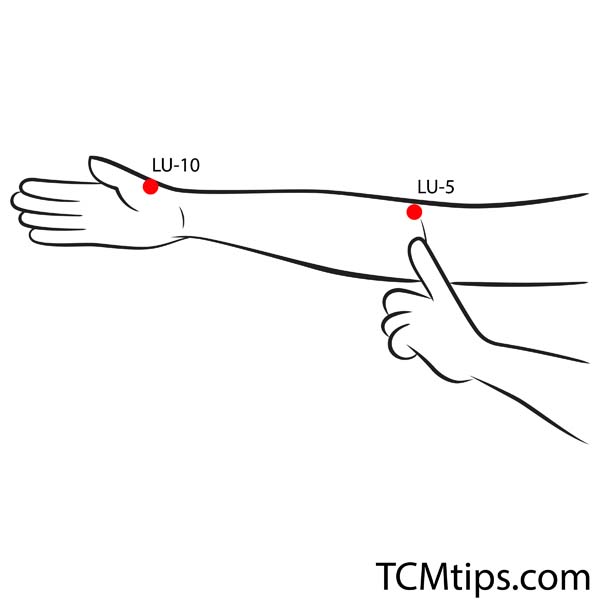

This acupressure point on the lung meridian is a great point to use when your child is sick or coughing. Activating LU-5 expels heat from the body and clears phlegm from the lungs, making it among the best acupressure points for children with cough.
You can find the Chi Ze point, as it’s known in Chinese, on the elbow crease, about one cun lateral to the biceps tendon.
As well as relieving cough and cold symptoms, stimulation here encourages relaxation, making it one of the useful calming acupressure points for kids. Apply firm pressure for a few seconds on both arms.
Acupoint: HT-7 (Other Names: Heart-7/Shen Men/Spirit Gate)
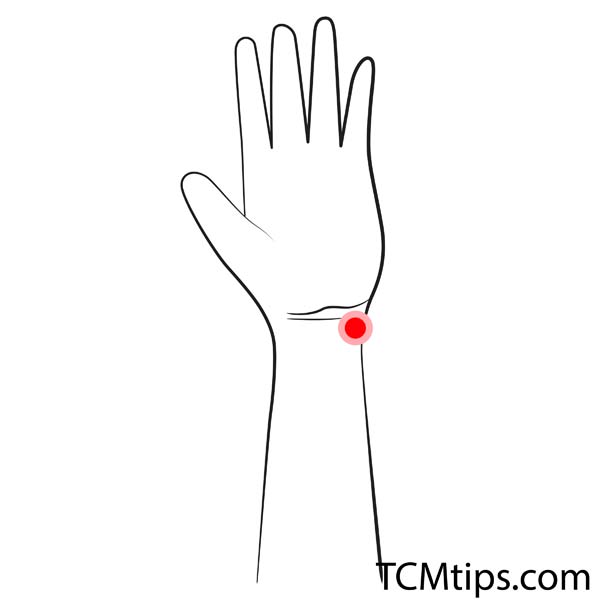
The HT-7 acupoint is one of the best acupressure points for kids’ anxiety. Stimulation here removes obstructions from the heart and calms the Shen, soothing anxious children and restoring harmony in the body.
HT-7, known as the “Spirit Gate,” is also commonly employed in acupuncture for autism, which traditional medicine regards as relating to a disturbance in the Shen.
The Shen Men acupoint is located on the transverse crease of the wrist, in the depression above the pisiform bone. Massage this point to help relieve restlessness, irritability, and anxiety in children.
Acupoint: LI-4 (Other Names: Large Intestine-4/He Gu/Joining Valley)

Another great acupoint to use in acupressure for children is the He Gu or “Joining Valley.” Activating points on the large intestine meridians can help to boost natural immunity, making these excellent acupressure points for child fever.
Clinical trials have shown promise in using acupuncture for headaches in children. In a review of 22 research papers that met the inclusion criteria, acupuncture was found to provide significant relief from migraine and tension-type headaches in children. LI-4 was one of the key acupressure points employed to treat symptoms of frontal headaches.
LI-4 is located on the hand, in the webbing between the index finger and the thumb. Massage this point to relieve symptoms of headaches and fever in your child.
Conclusion
- Press GV-20 to calm your child, improve focus, or help them to sleep.
- Stimulate ST-25 to give your child relief from gastric pain and abdominal issues.
- Activate LU-5 to clear phlegm from the lungs and soothe a child’s cough.
- Massage HT-7 to relieve restlessness and anxiety and clear disturbances in the Shen.
- Use LI-4 to boost natural immunity, calm a fever, and relieve children’s headaches.

Try our Anti-Aging Gua Sha Tool designed to bring out your skin’s natural glow.
Best Gua Sha Product- Anti-Aging: The tool is designed to target 11 specific aging signs such as wrinkles and sagging skin. By following the 7-step routine, users can improve skin firmness and reduce fine lines naturally.
- Enhances Skincare Routine: It works effectively with serums and lotions, boosting absorption and efficacy of skincare products.
- Visible Skin Improvement: Users can expect a smoother complexion, reduced puffiness, and a more youthful appearance.
 P. Sze
P. Sze 